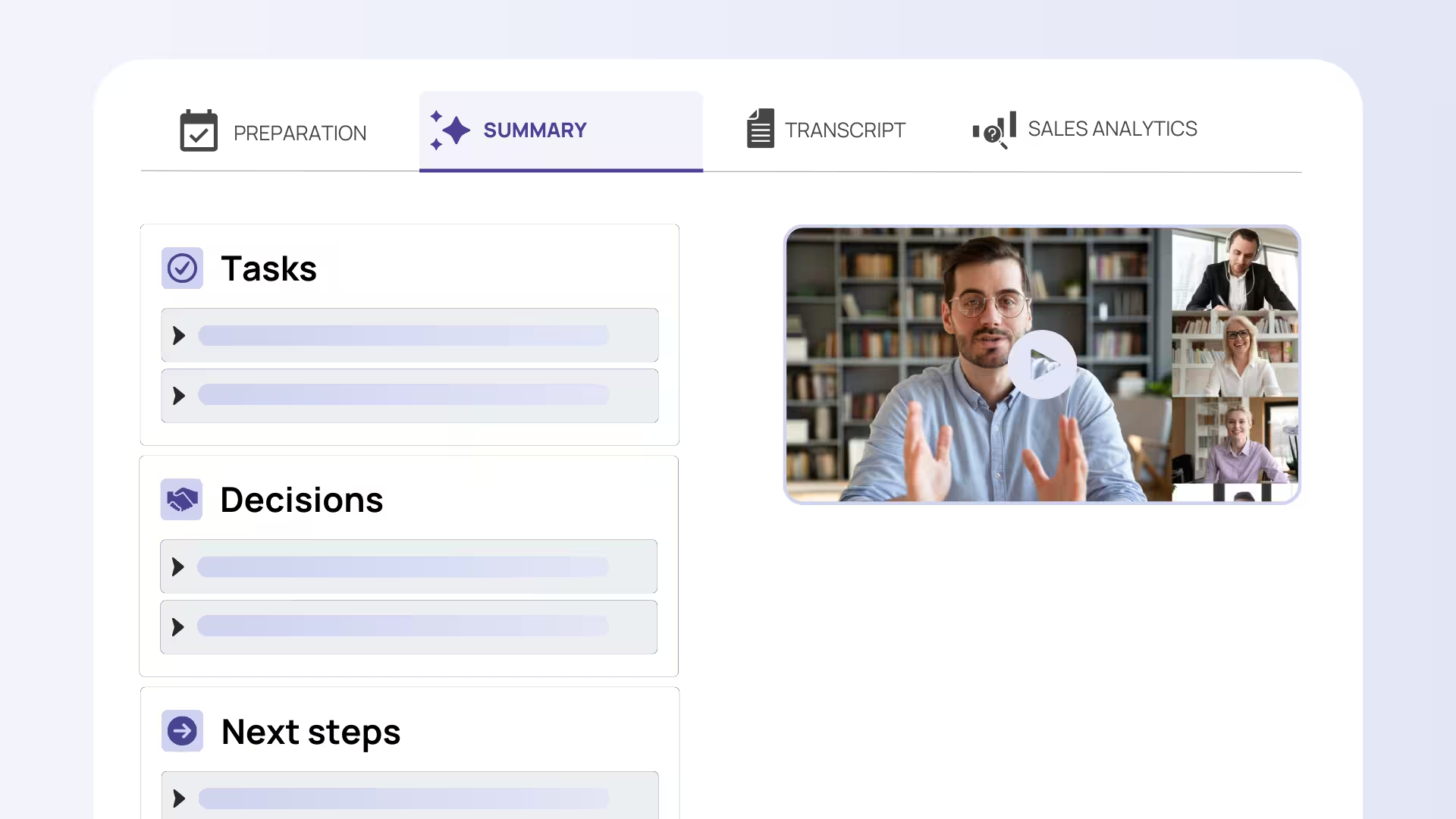Table of Contents
An all-hands meeting is a company-wide gathering that brings together every employee, regardless of their department or position. These meetings serve as a crucial communication bridge in today's increasingly remote and hybrid work environments, where maintaining organizational alignment can be challenging.
The importance of all-hands meetings has grown significantly as companies struggle to keep distributed teams connected and informed. These gatherings serve three main purposes: improving communication across all levels, fostering alignment around company goals, and boosting employee engagement through transparency and inclusion.
This article explores everything you need to know about all-hands meetings, from their fundamental purpose and benefits to practical best practices, creative ideas, and effective ways to measure their impact on your organization.
What Is an All-Hands Meeting? Definition and Purpose
Understanding the Concept
All-hands meetings are scheduled gatherings that involve every employee in your organization, from entry-level team members to C-suite executives. Unlike department-specific meetings, these sessions focus on company-wide updates, celebrating collective wins, addressing challenges transparently, and ensuring everyone moves in the same direction.
Most organizations hold these meetings monthly or quarterly, though the frequency varies depending on company size, industry, and specific needs. The key is consistency – employees should know when to expect these important touchpoints.
These meetings typically cover strategic updates, financial performance, new product launches, organizational changes, and recognition of team achievements. They're designed to break down silos and create a shared understanding of where the company stands and where it's headed.
Why All-Hands Meetings Matter
The value of all-hands meetings extends far beyond simple information sharing. They enhance organizational transparency by giving leadership a direct channel to communicate with all employees simultaneously, reducing the risk of miscommunication or rumors.
These meetings create a unified direction and strengthen company culture by reinforcing shared values and goals. When employees understand how their individual contributions fit into the bigger picture, they're more likely to feel engaged and motivated.
All-hands meetings also promote cross-departmental understanding and collaboration. Sales teams learn about product development challenges, while engineering teams gain insights into customer feedback and market demands.
According to research by WorkBoard (2023), 72% of employees report feeling more connected to their company after attending all-hands meetings. This statistic highlights the tangible impact these gatherings can have on employee engagement and organizational cohesion.
Best Practices for Hosting an Effective All-Hands Meeting
Planning and Structure
Successful all-hands meetings start with clear goals and a focused agenda shared in advance. Employees should know what to expect and how they can contribute to the discussion. This preparation helps set appropriate expectations and encourages more meaningful participation.
Keep meetings between 45-60 minutes to avoid meeting fatigue. This timeframe allows for substantial content while respecting everyone's busy schedules. Remember, you're asking your entire organization to pause their work, so make every minute count.
Mix your formats to maintain engagement. Combine presentations with Q&A sessions, live polls, and even breakout rooms for smaller group discussions. This variety is especially important in virtual or hybrid settings where maintaining attention can be more challenging.
Consider rotating facilitators or speakers from different departments. This approach keeps content fresh and demonstrates that leadership values diverse perspectives across the organization.
Fostering Engagement and Inclusivity
Interactive tools like Slido, Microsoft Teams polls, or Zoom reactions can dramatically increase participation. These platforms allow employees to ask questions anonymously, vote on topics, or provide real-time feedback without the pressure of speaking up in a large group.
Establish safe spaces for open dialogue and honest feedback. Encourage questions about difficult topics and be prepared to address concerns transparently. This openness builds trust and shows that leadership values employee input.
Include diverse voices across all functions and hierarchy levels. Feature speakers from different departments, showcase various team achievements, and ensure that all perspectives are represented in your content.
For global teams, accommodate different time zones and language preferences. Consider recording sessions for those who can't attend live, and provide translated materials when necessary.
Leveraging Technology
Choose platforms that support your meeting goals effectively. Zoom, Microsoft Teams, and Google Meet all offer features specifically designed for large group meetings, including breakout rooms, live captions, and screen sharing capabilities.
Prioritize accessibility features like live captions, transcripts, and chat reactions. These tools ensure that all employees can participate fully, regardless of their communication preferences or needs.
Consider using AI meeting assistants like Sally to streamline documentation and follow-up processes. Sally can record, transcribe, and summarize your all-hands meetings while integrating with over 8000 tools, making it easier to distribute key points and action items across your organization while remaining GDPR-compliant.

Avoiding Common Pitfalls
Avoid information overload by focusing on concise, relevant content. It's better to cover fewer topics thoroughly than to overwhelm attendees with too much information. Prioritize the most important updates and save detailed discussions for smaller, more focused meetings.
Prevent one-way communication by actively encouraging questions and dialogue. All-hands meetings should feel like conversations, not lectures. Build in time for interaction and be prepared to address unexpected questions or concerns.
Prepare for technical difficulties with rehearsals, backup plans, and dedicated support. Test all technology in advance, have alternative communication methods ready, and designate someone to handle technical issues so presenters can focus on content.
Creative Ideas and Themes for All-Hands Meetings
Engaging Topics and Activities
Highlight significant company milestones, product launches, or strategic shifts that affect everyone. These updates help employees understand how their daily work contributes to larger organizational goals and creates excitement about future possibilities.
Celebrate employee achievements, work anniversaries, and team successes. Recognition is a powerful motivator, and public acknowledgment during all-hands meetings can boost morale across the entire organization.
Invite guest speakers from inside or outside the company to inspire or educate your team. Industry experts, successful customers, or even employees from other departments can provide fresh perspectives and valuable insights.
Include interactive segments like "Ask Me Anything" sessions with executives or cross-team project demonstrations. Atlassian's famous "ShipIt Days" showcase how teams can present their innovations and progress, fostering a culture of continuous improvement and transparency.
Tailoring to Company Culture
Adapt your meeting format to match your organizational culture. Startups and creative teams might prefer informal storytelling formats that emphasize innovation and flexibility, while large enterprises may require more structured, data-driven presentations.
Incorporate cultural celebrations, diversity and inclusion spotlights, or community involvement updates. These elements reinforce company values and show employees that the organization cares about more than just business metrics.
Consider seasonal themes, industry-specific topics, or current events that relate to your business. This approach keeps content relevant and demonstrates that leadership stays connected to broader trends affecting the company.
The Importance of Feedback and Measuring Impact
Gathering and Using Feedback
Conduct immediate post-meeting surveys using built-in platform tools or external forms. Ask specific questions about content relevance, meeting format, timing, and participation opportunities. This feedback helps you improve future meetings and shows employees that their opinions matter.
Encourage ongoing suggestions about topics, timing, and participation methods. Create channels where employees can submit ideas or concerns between meetings, ensuring that all-hands content remains relevant and valuable.
Use tools like Sally to automate meeting summaries and action item distribution, making follow-up easier and more consistent. When employees receive clear summaries of key points and next steps, they're more likely to stay engaged and accountable.
.avif)
Measuring Long-Term Effectiveness
Evaluate team engagement scores, employee retention rates, and productivity metrics over time to assess the broader impact of your all-hands meetings. Look for trends that correlate with meeting frequency, content quality, or participation levels.
Track improvements in cross-team collaboration and alignment on strategic goals. Monitor whether departments are working together more effectively and whether employees demonstrate better understanding of company objectives in their daily work.
Consider developing internal frameworks for assessing these metrics regularly. Consistent measurement helps you identify what's working and what needs adjustment, ensuring that your all-hands meetings continue to deliver value.
Conclusion
Effectively run all-hands meetings deliver significant benefits: enhanced communication, stronger cultural cohesion, and improved organizational alignment. These outcomes are essential for success in today's distributed work environments.
The key to successful all-hands meetings lies in clear planning, engaging formats, inclusive participation, and smart use of technology. When you combine these elements with consistent feedback collection and continuous improvement, these meetings become powerful tools for organizational success.
Consider investing in tools like Sally to automate meeting processes and documentation, saving time while increasing transparency and follow-through. The right technology can transform your all-hands meetings from administrative tasks into strategic advantages.
Rethink your next all-hands meeting as an opportunity to inspire, empower, and unite your team. With proper planning and execution, these gatherings can become highlights of your organizational calendar and drivers of meaningful change.

Try meeting transcription now!
Experience how effortless meeting notes can be – try Sally free for 4 weeks.
Test NowOr: Arrange a Demo Appointment

.avif)


